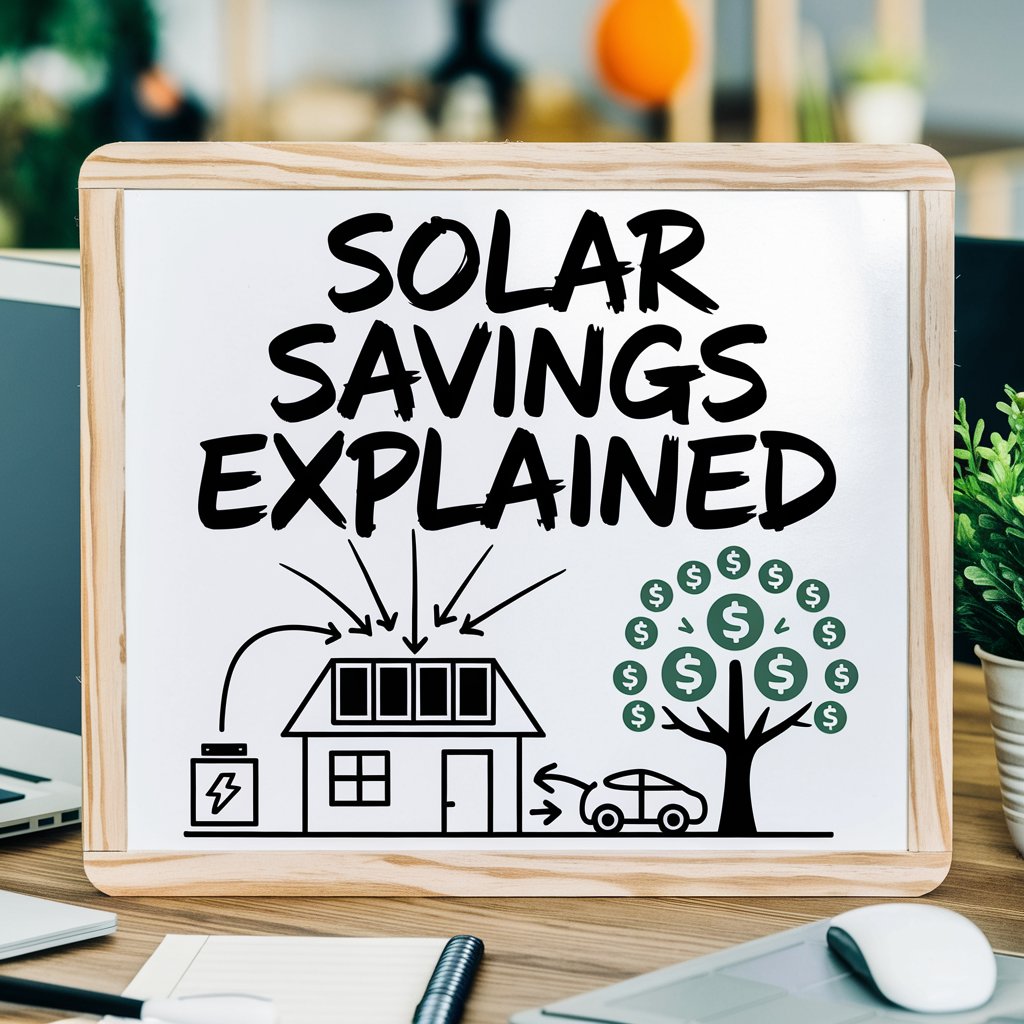Solar panels can significantly reduce electricity costs, but they don’t provide completely free electricity. According to data from HSB Renewables, solar panel installations can yield considerable annual savings on electricity bills, with most households able to save between 70-80% on their energy costs by generating their own solar power.
Smart Export Guarantee Explained
The Smart Export Guarantee (SEG) is a UK government-backed scheme that allows small-scale renewable electricity generators to receive payments for exporting surplus energy back to the grid. Launched on January 1, 2020, the SEG replaced the previous Feed-in Tariff scheme. Key features of the SEG include:
- Eligibility for solar PV, wind, hydro, micro-CHP, and anaerobic digestion systems up to 5MW capacity (50kW for micro-CHP).
- Mandatory participation for energy suppliers with over 150,000 customers.
- Tariff rates set by suppliers, but must be above zero.
- Requirement for a smart meter capable of providing half-hourly export readings.
- Typical payment rates ranging from 1p to 20p per kWh of exported electricity.
While the SEG can provide additional income for solar panel owners, the actual earnings depend on factors such as system size, energy consumption, and chosen tariff. Homeowners should compare different SEG tariffs to find the best option for their circumstances.
Impact of Weather on Savings
Weather conditions significantly impact solar panel efficiency and, consequently, potential savings. While solar panels can still generate electricity on cloudy or rainy days, their output is reduced compared to clear, sunny conditions. Key weather-related factors affecting solar savings include:
- Temperature: Higher temperatures can decrease panel efficiency. A 1°C rise in temperature can reduce efficiency by up to 0.5%.
- Cloud cover: Partially cloudy days may reduce energy production by 10-25%, while full cloud coverage can decrease output by up to 90%.
- Rain: While reducing immediate energy generation, rain helps clean panels, improving long-term efficiency.
- Seasonal changes: Longer summer days typically result in higher energy production and savings, while shorter winter days lead to reduced output.
To maximize savings year-round, consider factors like panel orientation, tilt angle, and potentially incorporating energy storage solutions to offset reduced production during unfavorable weather conditions.
Solar Battery Storage Benefits
Solar battery storage systems offer several key benefits for homeowners with solar panels:
- Increased self-consumption: Batteries allow you to store excess solar energy generated during the day for use at night or during cloudy periods, potentially increasing self-consumption from 35-50% to up to 80%.
- Lower electricity bills: By using stored solar energy during peak rate times, homeowners can save up to 90% on energy bills.
- Energy independence: Batteries provide backup power during grid outages, reducing reliance on utility companies.
- Optimized renewable energy use: Storage prevents waste of excess solar energy that would otherwise be sent back to the grid.
- Financial incentives: Some utility companies offer payments or reduced tariffs for allowing grid energy to be stored in home batteries during off-peak times.
While initial costs can be high, declining battery prices and rising electricity costs are improving the long-term financial benefits of solar battery storage for UK households.
Solar Power Savings
Solar panels do not provide completely free electricity, but they can significantly reduce your energy costs over time. While the initial installation requires an upfront investment, solar panels generate electricity from sunlight at no additional cost, allowing homeowners to offset a large portion of their grid electricity usage. Understanding local factors like san angelo electricity rates can help homeowners evaluate potential savings and decide the best time to invest in solar solutions.
The amount of “free” electricity you can generate depends on several factors:
- System size: Larger systems produce more electricity.
- Roof orientation: South-facing roofs are optimal in the Northern Hemisphere.
- Local climate: More sunlight hours increase generation.
- Shading: Reduced output if panels are shaded.
- Panel efficiency: Higher efficiency panels produce more electricity.
On average, a typical residential solar system can offset 70-80% of a household’s electricity consumption. This means that while you’re not getting completely free electricity, you’re significantly reducing your reliance on grid power and associated costs.
It’s important to note that solar panels produce electricity only during daylight hours. To maximize the benefits of your solar system, you may need to adjust your energy consumption patterns or invest in a battery storage system. Battery storage allows you to use solar-generated electricity during nighttime or cloudy periods, further reducing your dependence on grid electricity.
Additionally, any excess electricity your system generates can be exported back to the grid through schemes like the Smart Export Guarantee (SEG) in the UK. While not providing free electricity per se, these export payments can further offset your overall energy costs.
Maintenance costs for solar panels are generally low, with most systems requiring only occasional cleaning and inspection. However, you may need to replace the inverter after about 12-15 years, which should be factored into long-term cost calculations.
In summary, while solar panels don’t provide entirely free electricity, they offer a significant reduction in energy costs over their lifetime, typically 25 years or more. The combination of reduced grid electricity consumption, potential export payments, and low maintenance costs makes solar panels an attractive option for many homeowners seeking to lower their energy bills and carbon footprint.
How to Maximize SEG Earnings
To maximize your earnings from the Smart Export Guarantee (SEG) scheme, consider implementing the following strategies:
- Choose the best SEG tariff: Compare rates offered by different energy suppliers.
- Optimize energy usage: Shift your energy consumption to times when your solar panels are generating the most electricity.
- Install a solar battery: A battery storage system can help you store excess energy generated during the day for use during evening hours or cloudy periods.
- Maintain your solar panels: Regular cleaning and maintenance ensure they operate at peak efficiency.
- Consider system size: A larger solar panel system typically generates more electricity, potentially increasing your SEG earnings.
- Use smart technology: Smart meters and energy management systems can help you track your energy production and consumption in real-time.
- Combine with other technologies: Integrating your solar panels with technologies like heat pumps or electric vehicles can increase your overall energy efficiency.
- Monitor and switch tariffs: SEG rates can change over time. Regularly review your tariff and switch to a better offer if available.
By implementing these strategies, a typical UK household with a 4.4kWp solar panel system and a 5.2kWh battery could potentially earn a significant amount through the SEG scheme. However, actual earnings will vary based on individual circumstances, system performance, and chosen tariff rates.
Seasonal Variations in Solar Output
Solar panel output varies significantly throughout the year due to seasonal changes in sunlight availability and weather conditions. In most areas of the United States, solar panels yield the highest production in the summer months, followed by spring and fall, with winter having the lowest output. This seasonality is primarily driven by changes in daylight hours and the sun’s angle relative to the panels.
During summer, longer days and a higher sun angle result in peak solar production. On average, 65% of a solar system’s annual energy output is generated between March 21st and September 21st. Conversely, the period from September 21st to March 21st accounts for only 35% of annual solar output. The difference is even more pronounced when comparing peak summer and winter months, with solar panels typically producing 40-60% less energy in December and January compared to July and August.
Several factors contribute to these seasonal variations:
- Daylight hours: Summer days are significantly longer than winter days, allowing for more solar energy generation.
- Sun angle: The sun’s position is higher in the sky during summer, resulting in more direct sunlight hitting the panels.
- Weather conditions: Winter months often bring increased cloud cover and precipitation, reducing solar energy production.
- Temperature: Solar panels actually operate more efficiently in cooler temperatures. Panel efficiency can increase by up to 0.5% per degree Celsius below 25°C.
Despite lower winter production, solar panels can still generate electricity effectively year-round. Even on cloudy days, panels typically produce 10-25% of their standard output. To maximize annual energy production, solar systems are often designed to overproduce during spring, summer, and early fall, building up a bank of kilowatt-hours with the utility through net metering to offset reduced winter production.
It’s important to note that seasonal variations in solar output don’t necessarily translate to proportional changes in energy bills. Many homeowners with solar energy systems may experience higher energy bills in winter months due to both reduced solar production and increased energy consumption for heating. However, the overall annual savings from solar energy can still be substantial, with most households able to save between 70-80% on their energy costs by generating their own solar power.
To optimize solar energy generation year-round, consider strategies such as adjusting panel tilt for winter months, regular maintenance to ensure peak efficiency, and incorporating energy storage solutions to balance out seasonal fluctuations in production.
Summary
In summary, while solar panels don’t provide completely free electricity, they offer significant long-term savings by reducing reliance on grid power. Households can save 70-80% on energy costs, depending on system size, location, and usage. The Smart Export Guarantee (SEG) allows homeowners to earn additional income by exporting excess energy back to the grid. Weather and seasonal factors influence solar energy production, but battery storage systems can help optimize self-consumption and further reduce electricity bills. Over time, the combination of lower grid dependency, potential export payments, and minimal maintenance costs makes solar panels a cost-effective and environmentally friendly energy solution.






